MDF vs Pine vs Solid Oak for Skirting Boards: Comparing Your Top Choices
So you've decided to give your room a fresh touch and have decided to upgrade the skirting board. Great! Now, if you're here then it means you've got yourself stuck on deciding what the best material for skirting boards. While different materials boast their strengths, there isn't necessarily one right answer, as your choice may be different depending on the look you're going for, as well as your budget.
As for material choices, you have a few options to consider. MDF, pine, and solid oak are popular materials, each has its advantages and drawbacks. Understanding the differences among them will help you make an informed decision to enhance your home's aesthetics and functionality.
MDF skirting boards are known for their cost-effectiveness and ease of installation. They have a smooth, blemish-free surface, and are less susceptible to warping. Available in a range of styles and sizes, MDF is a practical choice if you plan on painting your skirting boards. On the other hand, pine skirting boards offer the beauty of natural wood grain, making them ideal for varnished finishes or projects that require a more classic look. They are also flexible and easy to sand down and reuse. Lastly, solid oak skirting boards provide a premium finish and are more durable, giving your space a touch of elegance.
To explore an extensive range of skirting boards in oak, MDF, and pine, take a browse around our website. With over 65 styles to choose from, you’ll be sure to find the perfect option to suit your taste and requirements.
Material Profiles

MDF: Features and Benefits
MDF skirting boards are a popular choice for homeowners due to several reasons. First of all, they're cost-effective and easy to install, which makes them perfect for those on a budget. When it comes to the types available, you have options like standard MDF and moisture-resistant MDF. The latter is a great choice for areas with potential exposure to moisture, like bathrooms and kitchens.
MDF is also known for its durability, which means it will stand up well against wear and tear. Some MDF skirting boards come pre-primed or pre-finished, making it easy to paint or customise to your taste later on. Remember, with MDF, you can expect a versatile material that offers both value and style.
Pine: Natural Aesthetics
Pine skirting boards, being a softwood, provide a more natural and warm aesthetic compared to the MDF alternative. They can be stained, oiled, varnished, or painted to blend seamlessly with your home's décor. Pine skirting boards are flexible and easy to work with, which allows for easy reusing and sanding down when needed.
-
Advantages:
- Visible wood grain
- Easy to customise the finish
- More eco-friendly compared to MDF
-
Disadvantages:
- Less durable than MDF or solid oak
- More prone to moisture-related issues
Solid Oak: Traditional Elegance
Solid oak skirting boards are considered the premium option when it comes to skirting materials. As a hardwood, oak offers a higher level of durability and can last for many years. It can also be painted, lacquered, or varnished to match the woodwork around your home.
For a touch of traditional elegance in your space, solid oak is the way to go. While it may be more expensive than pine or MDF, the investment is worthwhile for those seeking timeless style and lasting quality.
Design Considerations
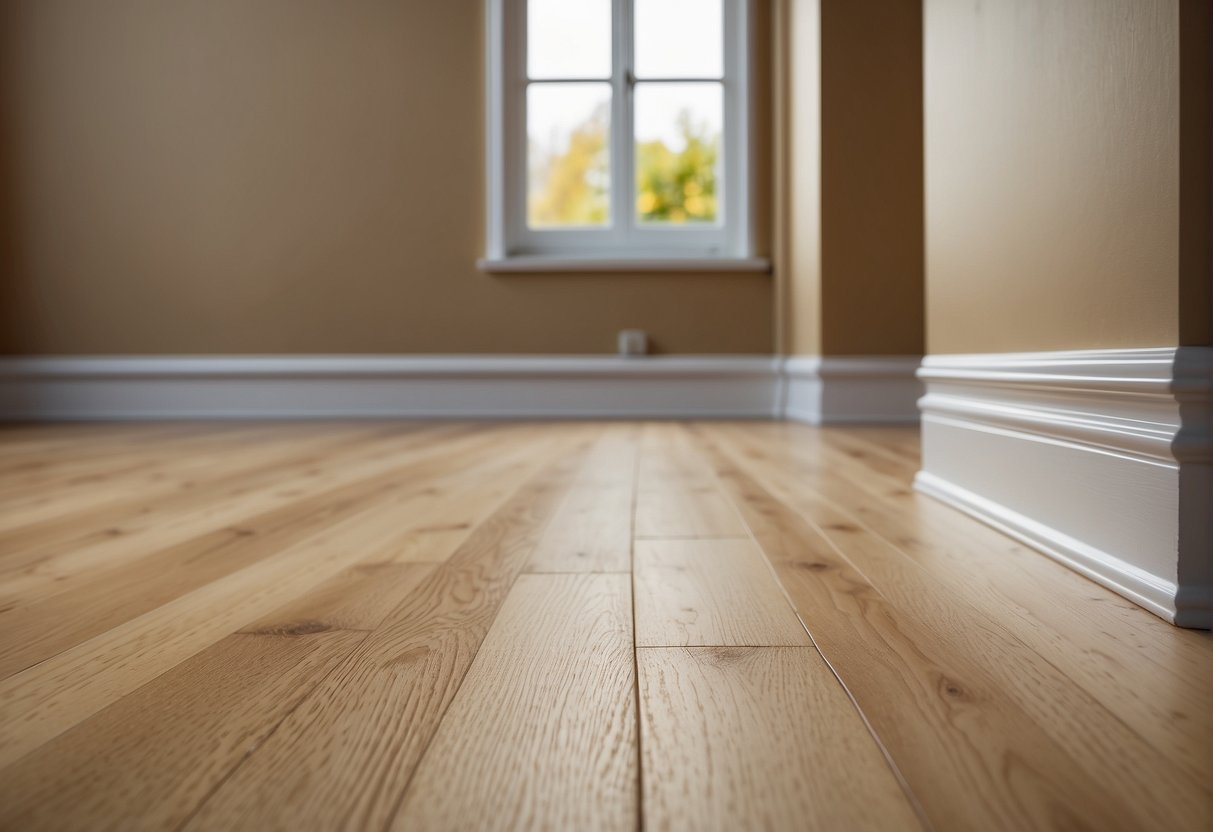
Styles and Shapes
The great thing about skirting boards is that there are plenty of styles and shapes available to suit your tastes. For a modern look, consider minimalist profiles like bullnose (rounded edge) or chamfered edge profile. If you prefer a classic look, try ogee or torus skirting boards.
MDF offers a smooth and uniform surface, making it easy to create intricate designs and moulding profiles. Pine skirting boards will give you the option to sand down and re-use if needed, while solid oak boards provide a more premium finish and are more durable.
Matching with Interior Design
Think about how your skirting will fit with your interior design. Solid wood skirting boards, such as pine or oak, allow for more flexibility in painting, lacquering or varnishing to match other woodwork in your home. This helps create a cohesive and visually appealing flow in your décor.
On the other hand, MDF skirting boards are known for their affordability and versatility. They can be easily customised to match your design inspiration and work well in both period properties and contemporary spaces.
Here are some popular materials:
- MDF: Cost-effective, versatile, and easy to work with for intricate designs.
- Pine: Flexible, easy to reuse and sand down, with a visible wood grain.
- Solid Oak: Premium finish, durability, and high-quality wood grain.
Practical Aspects of Installation
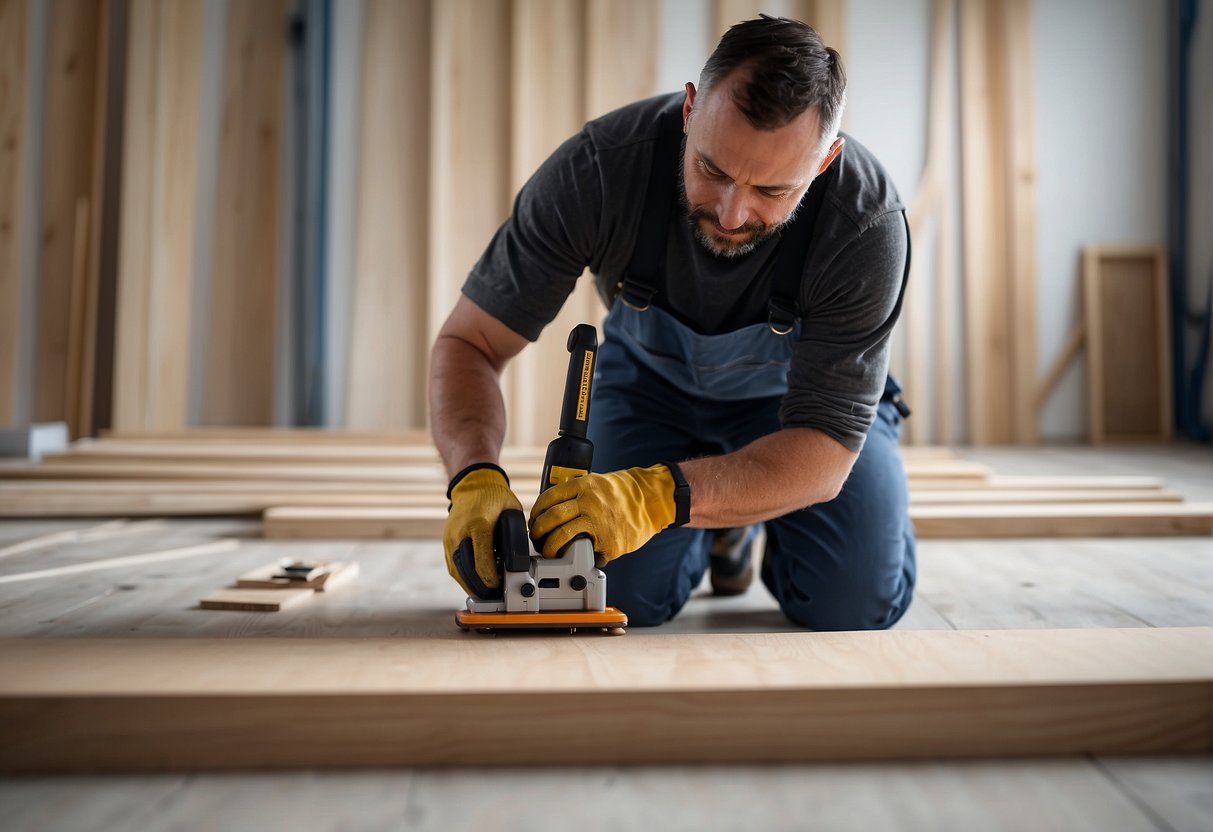
Measuring and Cutting
When installing skirting boards, measuring and cutting are crucial steps. Grab a tape measure and measure the lengths of the walls where you'll fit the skirting boards. Don't forget to add a bit extra for mitre cuts and errors. Cut your MDF, pine, or solid oak boards to the required length using a mitre saw, handsaw, or circular saw.
For inside and outside corners, make sure to create 45-degree mitre cuts. MDF and pine tend to be more forgiving, allowing for easier cuts and adjustments. However, solid oak, due to its higher density, may require more effort and precise cuts.
Fitting and Fixing
Once you've cut the skirting boards, it's time to fit and fix them to the walls. Before fixing, it's a good idea to double-check the measurements and fit the boards against the wall to ensure a snug fit.
To fit your skirting boards, you can use a combination of adhesive and nails or screws. For MDF boards, adhesive alone should suffice, but for pine and solid oak, combining adhesive with nails or screws will provide extra stability. When attaching the skirting boards, ensure they're flush against the wall and floor, and any adjacent boards meet at the corners.
Finishing Touches
Finally, let's add some finishing touches. Skirting boards can be finished with paint, varnish, or stains, depending on your material choice and preference.
-
MDF boards are usually pre-primed, which means you can paint them directly using either satin or gloss paint. Remember to lightly sand the surface before painting to achieve an even finish.
-
Pine boards lend themselves well to staining, but can also be painted or varnished. Before finishing, sand the surface to remove any imperfections.
-
Solid oak skirting boards can be treated with oil, wax, varnish, or stain to enhance their natural beauty, while also providing protection.
Maintenance and Upkeep
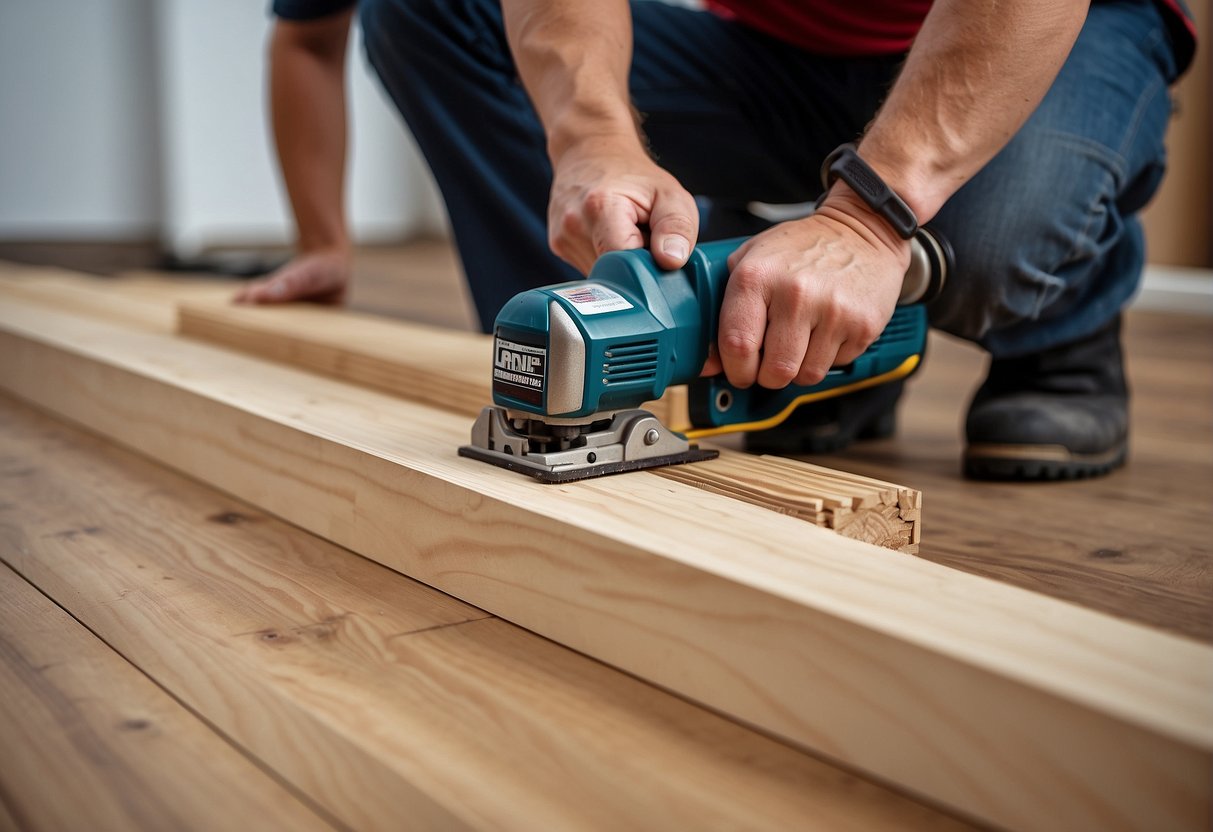
Cleaning and Repair
Have a few questions about cleaning your skirting boards? Well, the good news is that the process is quite similar for MDF, pine, and solid oak. You can easily clean them using a soft cloth or a vacuum cleaner with a brush attachment. For stubborn stains, a damp cloth can be used to gently wipe the surface, but make sure to dry it immediately to prevent any damage.
Now, let's talk about repairs. For MDF, it usually has a smooth surface and is less prone to warping, which makes it quite durable. However, in case of damages, you'll need to fill in any dents or gouges with a suitable wood filler before sanding the area smooth. For pine skirting boards, minor damages like dents and scratches can be easily sanded down, thanks to their soft nature. But, do keep an eye out for knots as they might loosen over time and require further repair. Solid oak skirting boards are known for their durability and strength, so they usually require minimal repair. If necessary, just sand down the damaged area and refinish it.
Repainting and Refinishing
MDF skirting boards typically come either pre-primed or finished, making them easy to paint. When repainting, simply lightly sand the surface to remove any gloss, clean off the dust, and then apply your desired paint. Remember to use a primer before applying the paint if the MDF isn't pre-primed.
For pine skirting boards, you can either paint or varnish them. To repaint, follow the same steps as MDF (sanding and cleaning), then apply primer and paint. If you prefer a varnished finish to showcase the natural grain, just clean and lightly sand the surface before applying a fresh coat of varnish.
With solid oak skirting boards, you have the option of painting, staining, or varnishing, depending on your preference. The process of refinishing is similar to the above materials: clean the surface, lightly sand it, and apply the paint, stain, or varnish of your choice.
Comparative Insights
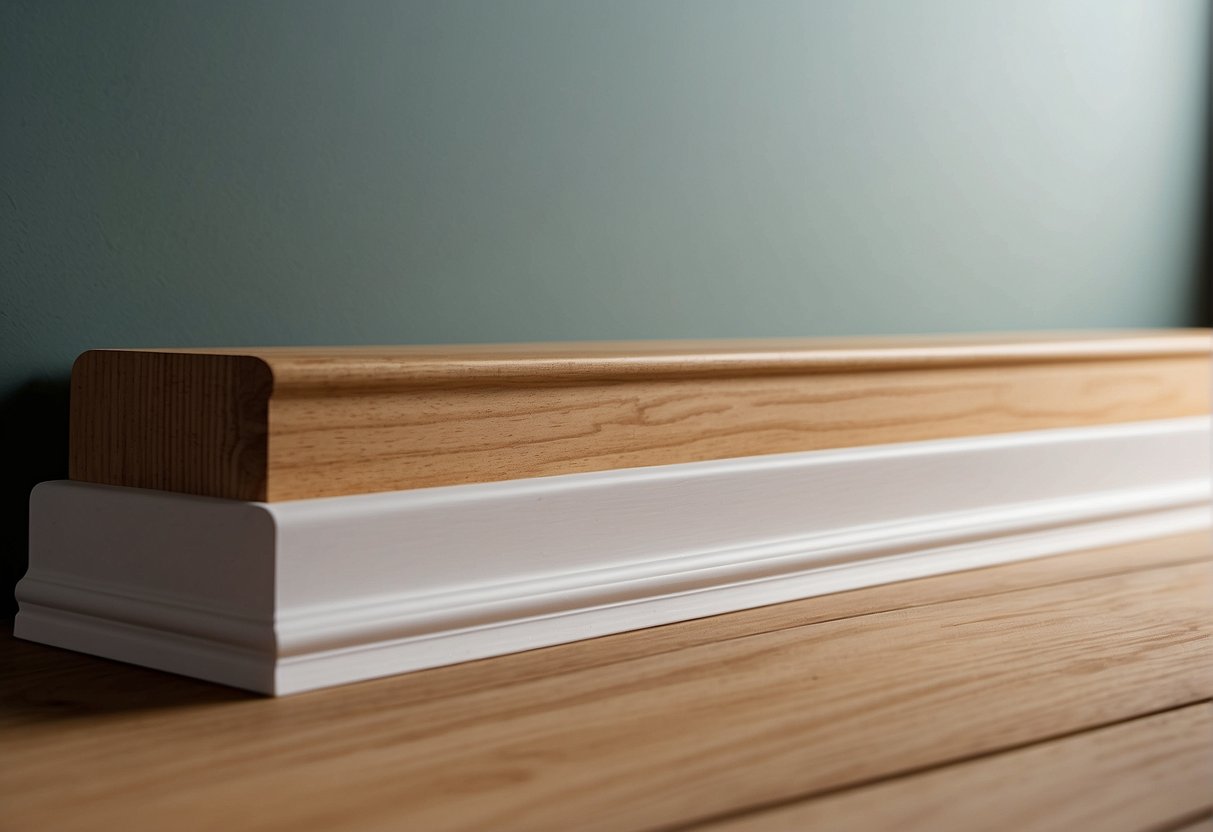
Cost-Efficiency Across Materials
Cost is becoming more of a deciding factor for many new renovators and DIY enthusiasts when planning out a new project. It's important to weigh up the cost-efficiency of the different materials. MDF is known for its affordability and versatility, making it a popular choice among homeowners. In comparison, pine skirting boards tend to be slightly more expensive than MDF but still offer good value for money. Solid oak, on the other hand, is a more luxurious option and comes with a higher price tag. In terms of cost-efficiency, you'll find that:
- MDF = Most affordable and versatile
- Pine = Moderately priced with some natural grain beauty
- Solid Oak = Highest cost, but offers a premium appearance
Durability and Longevity
If we take a look at the longevity factors for each option, all three materials have their own set of strengths. MDF is made up of wood fibre and resin, resulting in a strong and durable product, especially when opting for a moisture-resistant grade. Pine skirting boards have the advantage of being made from a natural material, which can be altered or repaired in situ if needed, rather than replacing the entire skirting. Solid oak is the strongest of the three, offering excellent durability and a timeless appearance that can last for many years with proper care. In summary:
- MDF = Strong, durable, moisture-resistant options available
- Pine = Natural material, that can be repaired in situ
- Solid Oak = Most durable and long-lasting
Resistance to Common Issues
Each material has its own level of resistance to common issues such as warping, moisture, and wear and tear. MDF is generally less prone to warping due to its composition and is usually moisture-resistant, depending on the grade you choose. Pine, being a natural wood, can be prone to warping if not treated properly, but it offers an authentic, natural grain appearance ideal for a varnished finish. Solid oak skirting boards provide the best resistance to warping and other common issues but require regular maintenance to keep them in top condition.
To sum up, you can expect the following resistance properties:
- MDF = Less prone to warping, moisture-resistant options available
- Pine = More prone to warping, better for natural grain appearance
- Solid Oak = Excellent resistance to warping and other common issues, but requires maintenance
Aesthetic and Functional Attributes
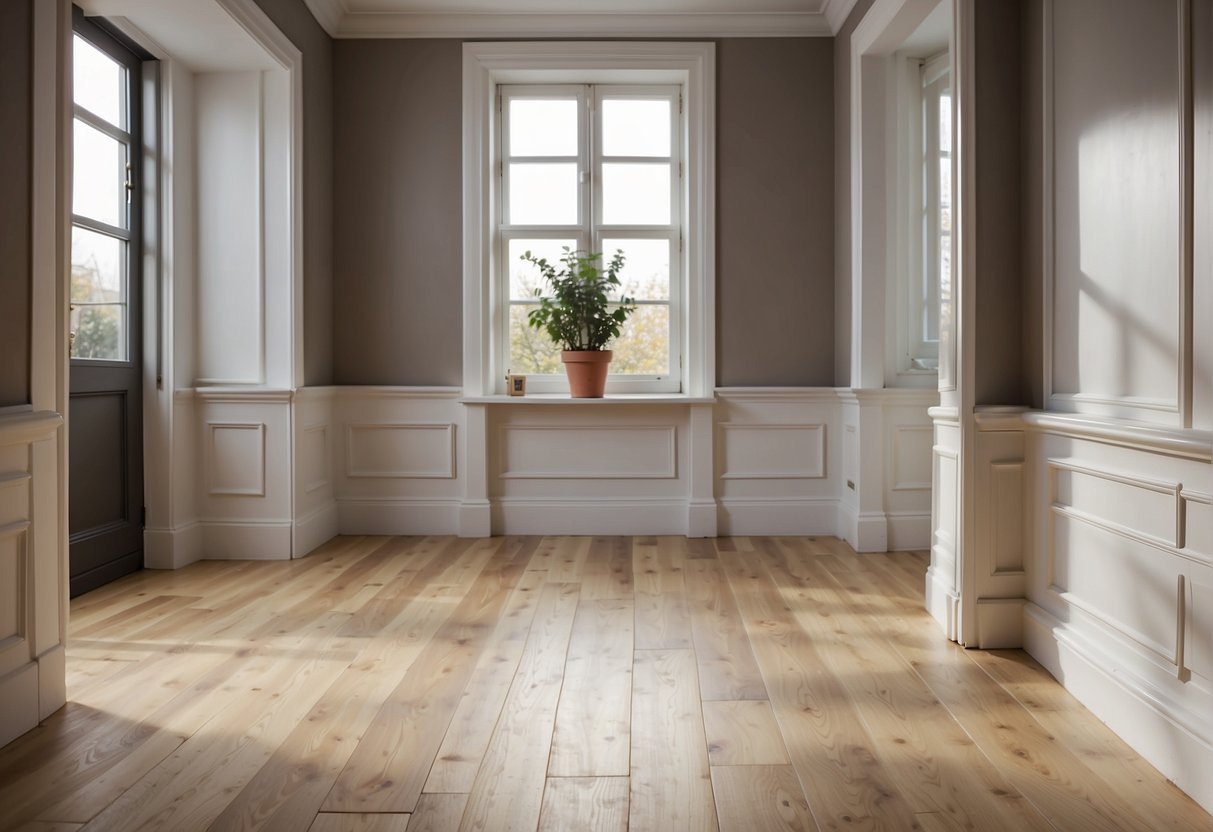
Matching Styles to Architecture
When choosing a skirting board material, it's essential to consider how it will complement your home's architecture and existing design. MDF boards offer a smooth, blemish-free surface that is well-suited for modern and minimalistic spaces. The versatility of MDF allows it to be available in various styles and sizes, making it an excellent choice for contemporary homes.
On the other hand, pine skirting boards boast the beauty of the natural grain, making them ideal for period properties and traditional decor styles. Solid oak skirting boards enhance the warmth and natural feel of a room, aligning with a more classic aesthetic.
Height and Sizing Choices
Paying attention to the size and height of your skirting boards is crucial in achieving balance and proportion in your space. Here are some guidelines to help you make the right choice:
- Standard height: A common height for skirting boards is around 120-170mm. You can use this as a starting point but don't hesitate to go bolder with taller boards if your room has high ceilings.
- High ceilings: For rooms with ceilings higher than 3 metres, choose skirting boards around 200-300mm in height to maintain visual balance.
- Low ceilings: If your space has low ceilings, select boards around 70-100mm in height to avoid overpowering the room.
Colour and Texture Selection
To make your skirting boards an attractive and cohesive element of your interior design, consider these tips for selecting colours and textures:
- Match the skirting board colour with the walls for a seamless and contemporary look.
- Choose a similar tone, but slightly darker than the wall colour to create subtle contrast and depth.
- Opt for a classic white or off-white skirting board colour for a timeless choice.
When it comes to texture, MDF and pine skirting boards can be finished with high-gloss or matte paint for a smooth appearance. Pine and solid oak skirting boards showcase the beauty of natural grain and texture, making them perfect for achieving a rustic or traditional look.
Environmental and Health Considerations
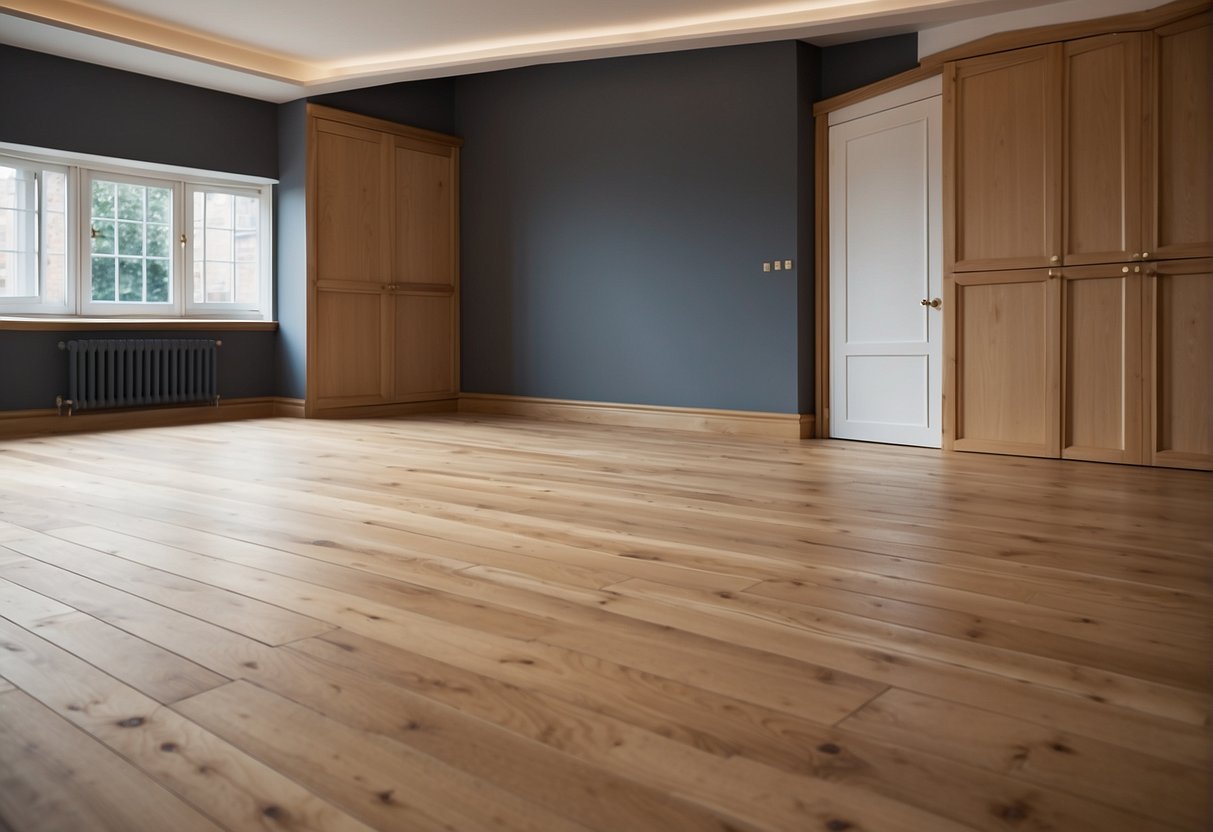
Material Sustainability
While considering which skirting board material to choose, it's important to think about the sustainability of the materials. For pine and solid oak, both are sourced from trees, which can be managed sustainably if harvested from responsibly managed forests. In general, softwoods like pine grow faster than hardwoods like oak, making them a more renewable resource. However, it's still crucial to ensure that your timber is sourced from a sustainable supplier.
MDF, on the other hand, is made from wood fibres and resin. This means that it utilises waste materials from the timber industry, reducing the need for additional logging. It's worth noting though, that the resin used in MDF can come from different sources, some of which may be less environmentally friendly.
In terms of material sustainability, here's a summary:
- Pine: Fast-growing, renewable softwood, but ensure sustainably sourced.
- Solid Oak: Slower-growing hardwood, ensure sustainably sourced.
- MDF: Utilises waste materials, resin source can vary.
Health Factors for Indoor Use
Something that we should all be mindful of, is paying close attention to the health factors associated with each material. Generally speaking, solid woods like pine and oak are considered safe for indoor use, given their natural composition. As long as you use non-toxic finishes for your skirting boards, these materials shouldn't pose any significant health risks.
With MDF, it's essential to consider the adhesive used to bind the wood fibres. Some MDF products can contain formaldehyde, a known irritant and potential carcinogen. When MDF is cut or sanded, it can release fine dust particles containing formaldehyde, which could pose a risk if proper precautions are not taken. Look for MDF products that are certified to have low formaldehyde emissions (e.g. E1 or E0 standards), for a safer, healthier option.
Expert and DIY Perspectives
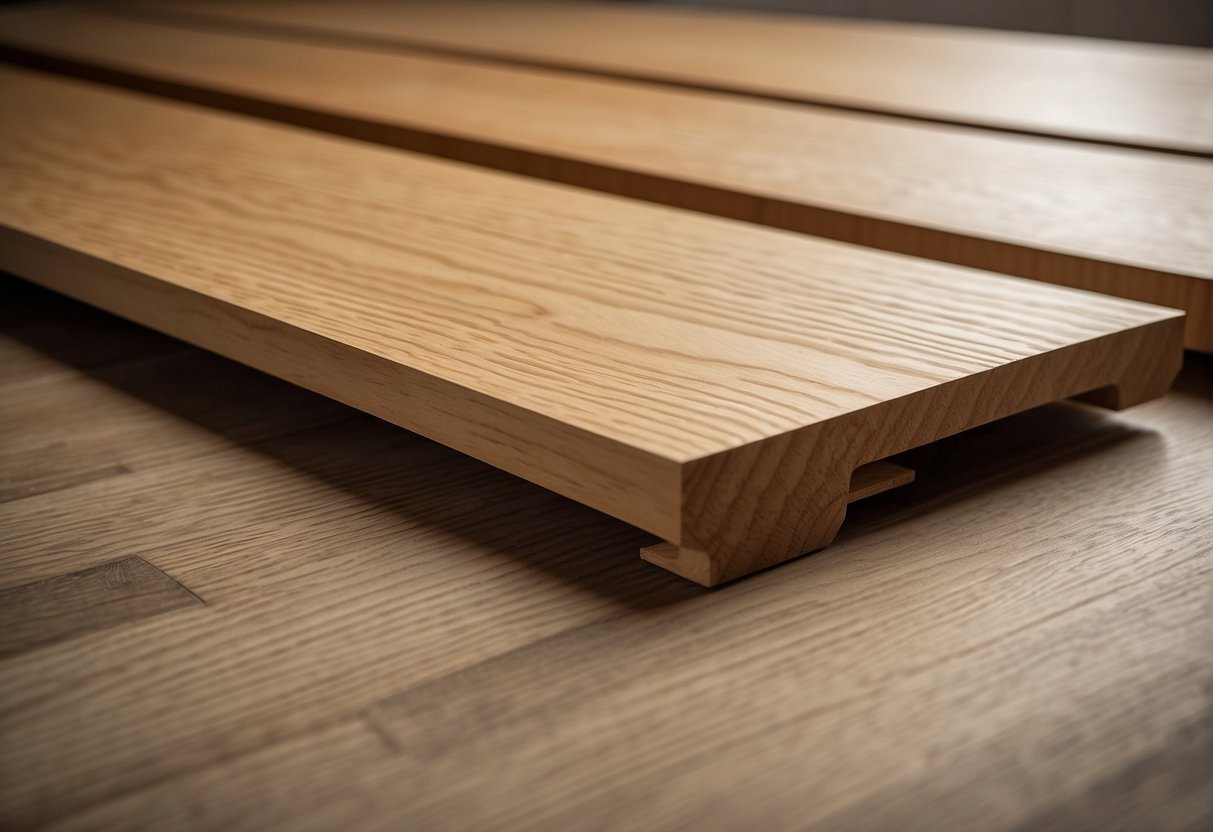
Professional Recommendations
If this is your first project, or you're still a little unsure of some of the details about the work, it's always a good idea to consult with professionals. They have the expertise to guide you in selecting the most suitable skirting board material for your needs.
For MDF skirting boards, experts often recommend them because they are strong, durable, and less prone to warping. Their smooth, blemish-free surface makes them ideal for painting. Additionally, MDF offers several styles and sizes to choose from, allowing you to find the perfect match for your home.
On the other hand, pine skirting boards are popular for their natural beauty and grain pattern. Professionals may recommend pine if you're looking for a varnished finish that showcases the wood's characteristics. Remember, though, that pine can be more susceptible to warping.
Finally, solid oak skirting boards are highly appreciated for their premium quality and stunning aesthetics. Experts often suggest oak for those who desire a more luxurious and long-lasting option, especially when finished with a clear coat varnish.
DIY Installation and Care Tips
If you're installing skirting boards on your own, ensure you follow some basic guidelines that can greatly impact the final look and lifespan of your chosen option.
- Preparation: Ensure that the wall and floor surfaces are clean, dry, and free from dust or dirt. This helps to create a better bonding surface for the adhesive.
- Cutting: Use a mitre saw or a hand saw with a mitre box to cut your skirting boards to the correct length and angle at the corners.
- Fixing: You can either use an adhesive or nails (or a combination of both) to fix the skirting boards onto the wall. For MDF, adhesive is the preferred method.
- Finishing: Fill any gaps or nail holes with a suitable filler, and sand the surface smooth before applying paint or varnish.
Taking care of your skirting boards is essential to maintaining their appearance and longevity. Here are some tips:
- For MDF and pine skirting boards, it's best to keep them clean by wiping them down with a damp cloth and using a mild detergent if needed. Avoid excessive moisture, as this can cause damage.
- For solid oak skirting boards, use a soft cloth to apply a suitable wood cleaner or polish. Regular dusting and occasional polishing help maintain the wood's natural beauty.

